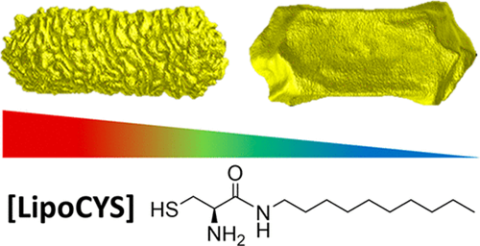The bottom-up production of chiral gold nanomaterials holds great potential for the advancement of biosensing and nano-optics, among other applications. Reproducible preparations of colloidal nanomaterials with chiral morphology have been reported, using cosurfactants or chiral inducers such as thiolated amino acids. However, the underlying growth mechanisms for these nanomaterials remain insufficiently understood. We introduce herein a purposely devised chiral inducer, a cysteine modified with a hydrophobic chain, as a versatile chiral inducer. The amphiphilic and chiral features of this molecule provide control over the chiral morphology and the chiroptical signature of the obtained nanoparticles by simply varying the concentration of chiral inducer. These results are supported by circular dichroism and electromagnetic modeling as well as electron tomography to analyze structural evolution at the facet scale. Our observations suggest complex roles for the factors involved in chiral synthesis: the chemical nature of the chiral inducers and the influence of cosurfactants.

